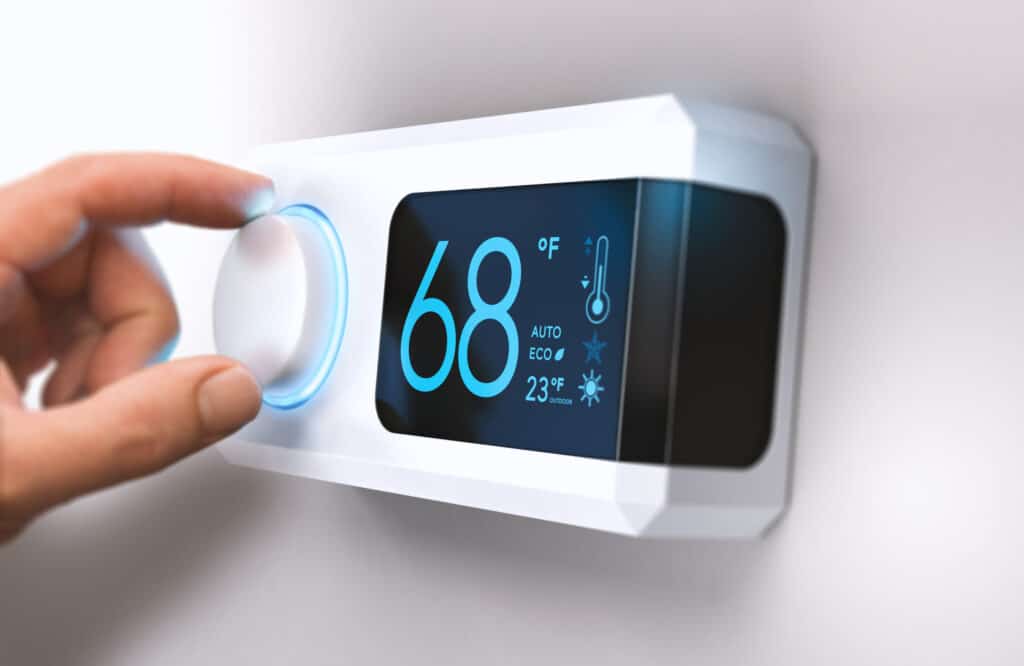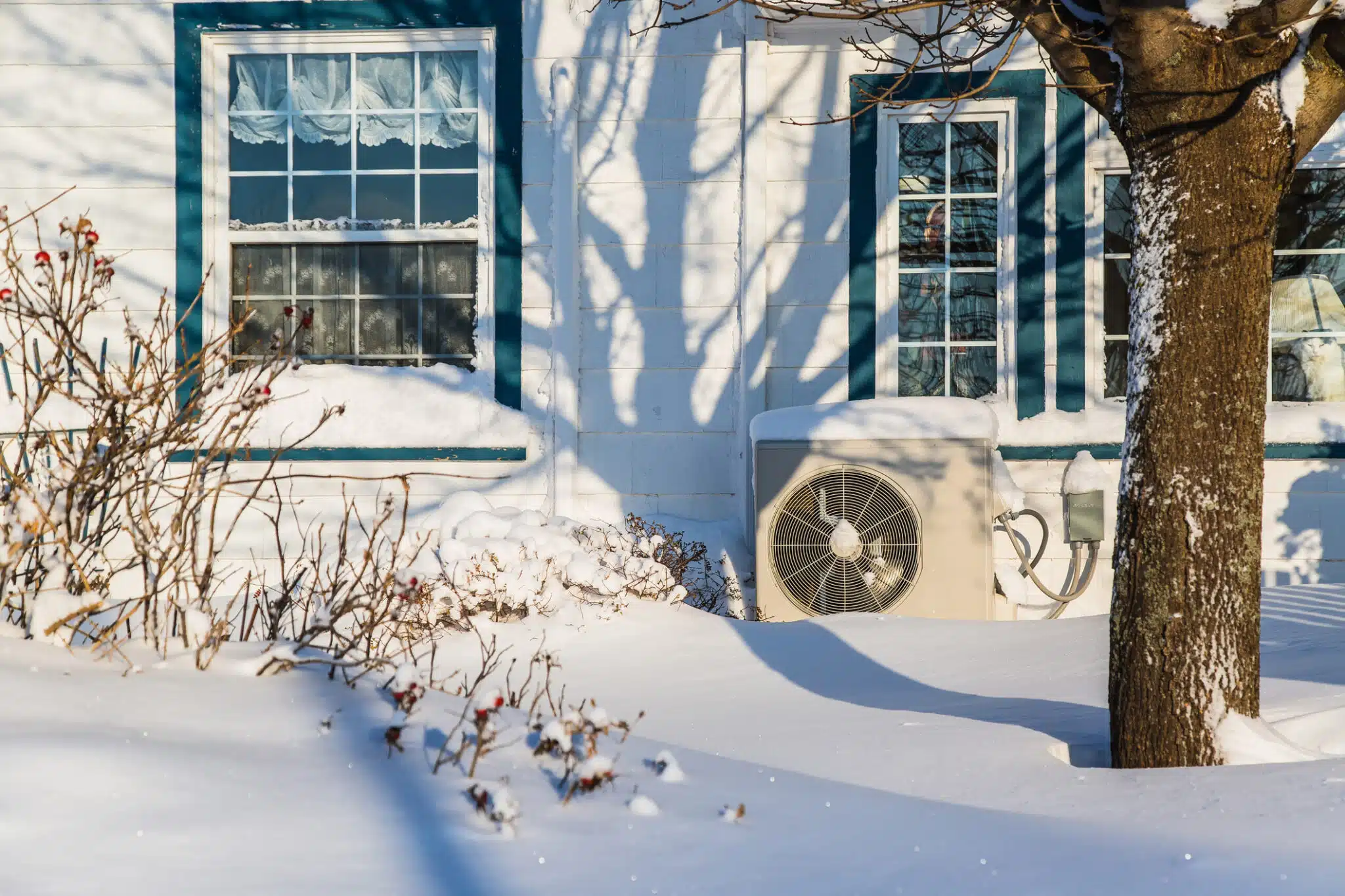Ready for winter? With Maryland’s cold months just around the corner, making sure your HVAC system is prepared can mean the difference between a cozy home and unexpected chills.
Many of us don’t think about our heating systems until something goes wrong, but a little preparation now can save a lot of hassle later.
From avoiding costly repairs to improving your home’s energy efficiency, getting your HVAC system winter-ready helps keep you comfortable all season long. Here’s everything you need to know to get started!
Why Preparing Your HVAC System for Winter Is Important
Avoiding Costly Repairs
No one wants to deal with a broken heater in the dead of winter, especially when HVAC repair services are in high demand. By preparing your HVAC system ahead of time, you can prevent small issues from turning into expensive breakdowns when you need your heating the most.
A few simple tasks, like cleaning and inspecting your system, go a long way in catching potential problems early. This proactive approach is much easier on your budget and spares you the hassle of emergency repairs. With a well-prepared system, you can relax, knowing your heating is ready for the cold months.
Improving Energy Efficiency
A properly maintained HVAC system helps keep your energy bills in check during winter. When your system is clean and running efficiently, it doesn’t have to work overtime to keep your home warm.
Simple steps like changing your air filter and checking for leaks make a big difference, especially in places like Timonium, where winters can be especially cold. These adjustments help your home warm up faster and stay comfortable without spiking your utility bills. A little prep can go a long way in balancing comfort with cost.
Ensuring Consistent Comfort
Nothing beats a cozy home when temperatures drop, but an unprepared HVAC system can leave some rooms chilly. Proper maintenance ensures your system distributes heat evenly throughout your home, avoiding uncomfortable cold spots.
With consistent warmth, you’ll find that every area of your home stays comfortable, whether you’re in the living room or heading to bed. Preparing your system also helps it run smoothly throughout the season, reducing wear and tear. A little care now means you can enjoy reliable warmth all winter long.

Key Steps to Prepare Your HVAC System for Winter
Change or Clean Air Filters
One of the easiest but most important steps in preparing your HVAC system for winter is changing or cleaning the air filters. Over time, filters collect dust, dirt, and allergens, which can clog the system and make it work harder than necessary.
By replacing or cleaning these filters regularly, you improve airflow and reduce strain on your HVAC system. Clean filters also help maintain indoor air quality, keeping your home healthier and more comfortable. This quick task can make a big difference in both performance and efficiency.
Clean and Inspect Air Ducts
Your HVAC system’s air ducts are responsible for delivering warm air throughout your home, so keeping them clean is essential. Dust, pet hair, and other particles can build up in the ducts over time, reducing airflow and efficiency.
An annual cleaning helps clear out these obstructions and ensures that warm air can circulate freely, especially during the colder months. Regular duct inspections also help you spot any signs of mold or other contaminants that could affect your indoor air quality. Clean ducts mean better efficiency and a healthier home environment.
Check and Seal Duct Leaks
Leaks in your air ducts can cause significant heat loss, making your HVAC system work harder to maintain the desired temperature. Inspecting and sealing these leaks is a key step in preparing for winter, as it prevents warm air from escaping and keeps your energy bills in check.
Sealing duct leaks also helps ensure that each room in your home receives consistent heating, so you won’t find yourself shivering in one area while others stay warm. By addressing duct leaks, you improve both comfort and efficiency. This step saves energy and enhances the system’s overall performance.
Test the Thermostat
Your thermostat plays a big role in controlling your home’s temperature, so it’s essential to test it before winter arrives. Start by setting the thermostat to your preferred winter temperature and seeing if the HVAC system responds correctly.
If you notice any issues, such as inaccurate readings or delays in heating, it may be time to recalibrate or replace your thermostat. A properly working thermostat makes it easier to maintain a comfortable home without constantly adjusting the settings. This quick test helps ensure your system is ready to keep you warm all season.
Clear the Area Around the Outdoor Unit
The outdoor unit of your HVAC system can accumulate leaves, dirt, and other debris, especially during fall. Clearing the area around this unit before winter ensures it has the airflow needed to operate efficiently.
Trim back any shrubs or plants that might obstruct it, and remove leaves or other debris that could block ventilation. A clean and unobstructed unit prevents strain on the system, reducing the chances of a winter breakdown. With proper airflow, your system can function effectively, even during the coldest months.
Inspect the Heat Exchanger
The heat exchanger is a critical component of your HVAC system, responsible for warming the air that circulates throughout your home. Before winter, it’s important to have the heat exchanger inspected for any signs of cracks or damage, as issues here can affect both efficiency and safety.
A cracked heat exchanger can leak harmful gases, like carbon monoxide, into your home, posing serious health risks. Regular inspections help catch any potential problems early, ensuring safe and efficient operation throughout the season. This precaution is essential for both safety and comfort during winter.
Scheduling a Professional HVAC Maintenance Visit
Benefits of Professional Maintenance
Scheduling a professional HVAC maintenance visit before winter offers several key benefits. Technicians have the expertise to spot issues that may go unnoticed by homeowners, helping prevent unexpected breakdowns during the colder months.
Routine maintenance also includes tasks like cleaning internal components, tightening electrical connections, and ensuring all parts are working properly.
These services improve the efficiency of your HVAC system, which can lead to lower energy bills and extend the system’s lifespan. Professional maintenance is a smart way to keep your home comfortable and your system reliable all winter long.
What to Expect During a Maintenance Visit
During an HVAC maintenance visit, a technician will perform a thorough inspection and tune-up to prepare your system for winter. They’ll typically start by cleaning or replacing air filters and inspecting essential components, like the heat exchanger and blower motor, for signs of wear or damage.
Technicians will also check thermostat settings, lubricate moving parts, and test the system’s overall operation. This detailed assessment ensures that everything is in peak condition, giving you peace of mind that your HVAC system is ready to handle the colder weather. A maintenance visit covers all the basics to keep your system running smoothly.
Ideal Timing for Maintenance Visits
The best time to schedule HVAC maintenance is in the early fall, just before temperatures begin to drop in areas like Pikesville and Cockeysville. This timing allows you to catch any issues well in advance of winter, reducing the risk of emergency repairs when demand for HVAC services is high.
Early fall maintenance also means your system is ready to go when the first cold snap hits, so you won’t have to scramble for service during the busiest season. By planning ahead, you ensure both timely service and a worry-free winter. A little preparation now can save a lot of hassle later.
Winterizing Your Home to Support Your HVAC System
Seal Doors and Windows
A well-sealed home keeps the warm air inside, helping your HVAC system work more efficiently during winter. Inspect doors and windows for any gaps or cracks where cold air could sneak in, and use weatherstripping or caulk to seal these areas.
Even small leaks can make your HVAC system work harder than necessary, which increases energy costs. Properly sealing doors and windows also keeps drafts at bay, so every room feels constantly warm. This simple step helps maintain a cozy home while reducing strain on your heating system.
Insulate Attics and Basements
Insulating your attic and basement is a smart way to support your HVAC system’s performance during winter. Without proper insulation, heat can escape through your roof or basement walls, forcing your heating system to work overtime to maintain a comfortable temperature.
By adding insulation to these areas, you create a thermal barrier that helps retain warmth throughout your home. Insulation not only keeps you comfortable but also lowers energy bills by reducing the need for constant heating. It’s an easy way to enhance your home’s efficiency while supporting your HVAC system.
Use Curtains and Blinds Strategically
Curtains and blinds can play a surprisingly important role in keeping your home warm during the colder months. During the day, open your curtains to let in natural sunlight, which can naturally heat up your home.
As evening approaches, close them to add an extra layer of insulation, keeping warm air from escaping through the windows. This simple trick helps you make the most of the sun’s warmth without increasing your energy use. Using curtains strategically reduces the workload on your HVAC system, making it easier to keep your home cozy.
Common HVAC Issues to Watch for in Winter
Uneven Heating
One common issue homeowners face in winter is uneven heating, where some rooms feel colder than others. This can happen when your HVAC system isn’t distributing heat evenly, often due to blockages or leaks in your ductwork.
Regular maintenance and checking for duct leaks can help resolve this problem, ensuring that every room gets the warmth it needs.
If the problem persists, you may need a professional to balance your system’s airflow. Uneven heating is a sign that your system might need some adjustments for maximum comfort.
Unusual Noises from the HVAC System
If your HVAC system starts making odd noises, like banging, clanking, or rattling, it’s a sign that something may be off. These sounds can indicate various issues, from loose components to a failing blower motor or even debris stuck in the system.
Ignoring these noises can lead to more serious damage, so it’s best to call a technician to check it out. Regularly listening for strange sounds helps you catch problems early, preventing costly repairs and ensuring your system runs smoothly. A quiet system is usually a healthy system.
Thermostat Malfunctions
A malfunctioning thermostat can disrupt your home’s comfort by causing your HVAC system to run inconsistently or not at all. If you notice that the temperature in your home doesn’t match the thermostat setting, or if it’s unresponsive, it might need recalibration or even replacement.
A faulty thermostat can cause your HVAC system to cycle on and off more frequently, wearing down components faster. Regular thermostat checks ensure your heating system is accurately controlled, making it easier to maintain a stable and comfortable temperature. A reliable thermostat is essential for efficient heating.
Energy-Saving Tips While Heating Your Home
Set the Thermostat Lower at Night
Lowering your thermostat at night is an easy way to save energy without sacrificing comfort. Since most people bundle up with blankets while they sleep, you won’t notice a slight temperature drop.
Setting the thermostat a few degrees lower overnight can significantly reduce energy usage, especially during colder months. This simple adjustment helps keep heating costs manageable without impacting your overall warmth. Plus, you can always set a timer for it to warm back up before you wake.
Use Ceiling Fans in Reverse
Ceiling fans aren’t just for summer—they can actually help distribute warmth in the winter as well. By setting your fan to rotate clockwise on a low speed, it pulls cool air up and pushes warm air down, helping to keep rooms evenly heated.
This small adjustment can make a noticeable difference in maintaining a comfortable temperature without overworking your heating system. Using ceiling fans effectively reduces the need to turn up the heat, saving energy and helping to balance warmth in your home.
Close Off Unused Rooms
If there are rooms in your home that you rarely use, consider closing off vents and shutting doors in those areas during winter. By directing warm air only to the spaces you use regularly, you reduce the workload on your heating system and help it run more efficiently.
This practice not only saves energy but also keeps frequently used rooms warmer. Closed-off rooms require less heat, which translates into lower heating costs overall. It’s a practical way to ensure warmth without extra expense.
Stay Warm This Winter with Expert Heating Prep in Cockeysville
Ready to enjoy a cozy winter in Cockeysville, Timonium, or Pikesville? Trust One Hour Heating & Air Conditioning of Cockeysville to ensure your heating system is fully prepared for the season.
Our skilled technicians provide thorough maintenance, keeping your home comfortable and energy-efficient all winter long. Contact us today to schedule a winter prep service that keeps you worry-free during Maryland’s coldest months!

FAQs
How often should I change my air filter during winter?
Changing your air filter every 1 to 3 months helps maintain good airflow and efficiency. Homes with pets or higher indoor air quality needs may require more frequent changes. Regular filter changes keep your air cleaner and your system working smoothly.
Can I prepare my heating system myself, or do I need a professional?
You can handle simple tasks like replacing filters and clearing outdoor debris, but a professional tune-up is recommended. Technicians can spot issues that aren’t immediately visible. This ensures everything runs safely and efficiently through the winter.
Is it normal for my heating system to make noise in cold weather?
Some sounds, like slight clicking on startup, are normal, but loud bangs or rattles can signal a problem. If you hear persistent or unusual noises, a technician should check the system. Early attention can prevent more serious issues.
What temperature should I set my thermostat at during the winter?
Setting your thermostat to around 68°F when home is a good balance of comfort and energy efficiency. Lowering it a few degrees at night or when you’re away can save energy. This setting helps keep heating costs manageable.
How can I improve the air quality in my home during winter?
Change filters regularly to reduce dust and allergens, and consider adding a humidifier for balanced indoor humidity. Proper humidity prevents overly dry air, which can irritate skin and respiratory passages. This approach promotes a healthier indoor environment.
What should I do if my heating system isn’t keeping my home warm enough?
If your heating system struggles to maintain a comfortable temperature, check your thermostat settings and ensure your air filters are clean. Blocked vents and improper insulation can also impact warmth. If the problem persists, it’s best to call a professional to inspect and address any potential issues in the system.






